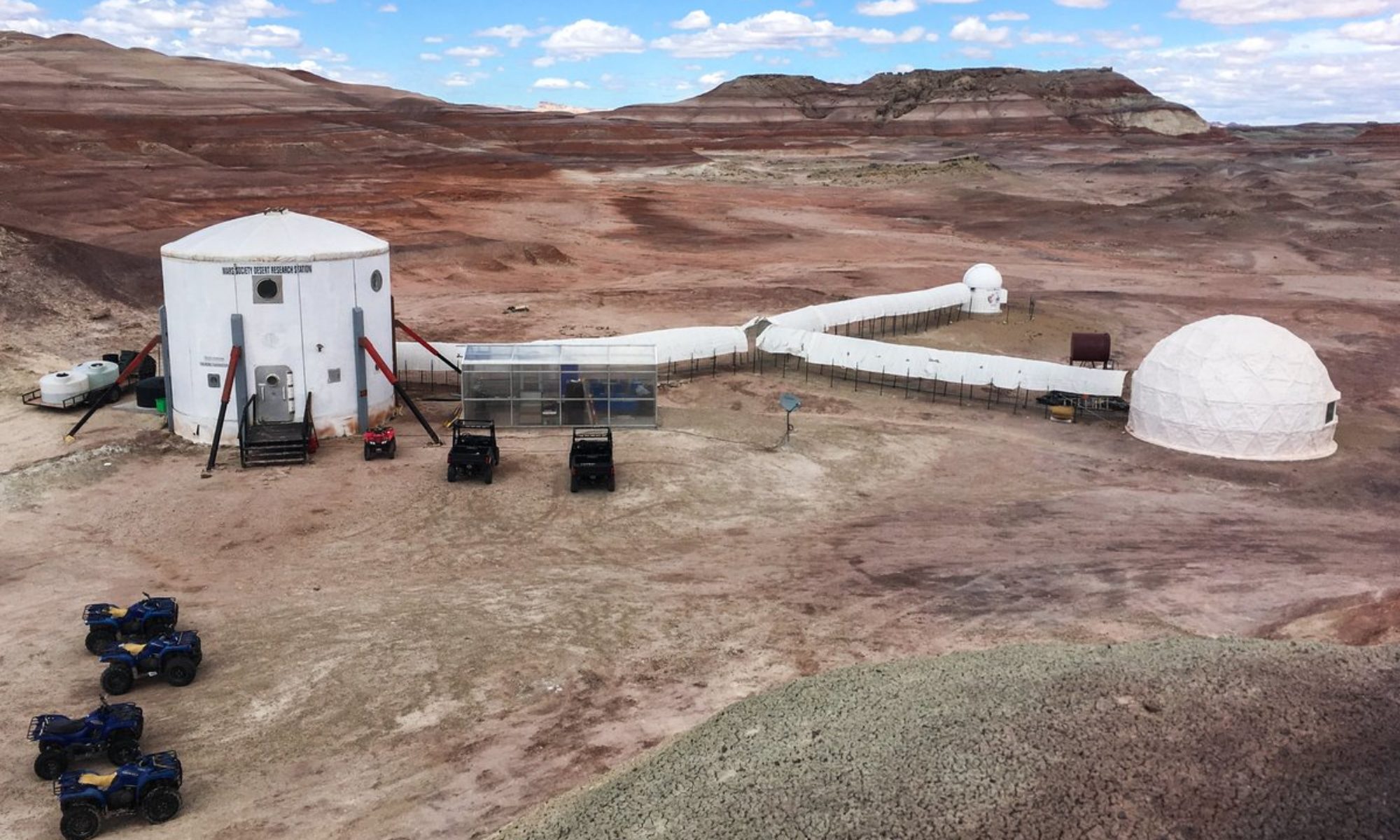Stepping Stones
“A hero is one who knows how to hang on for one minute longer.” – Norwegian proverb
It is no secret that colonizing Mars is hard, but despite that, the idea of a Martian settlement has been discussed for a little while now. Mars One was perhaps the first organization to seriously propose a permanent human colony in the Red Planet. From its announcement in 2012 to its bankruptcy in early 2019, it is estimated to have received tens of millions of dollars. But maybe even more impressive is the number of people that applied for a one-way ticket in a journey that would last several months: 165,000 candidates. What, then, draws so many hopeful dreamers towards this collective vision?
For us from Crew Montes, Mars is a more than a dream. It is a testament of the best of our abilities, and Sol 7 was an illustration of why that is the case. Today, Mr. Fix It, Genie and I set out on an EVA to the same spot that others from the crew explored yesterday: Eos Chasm. This 4h30 EVA tested our mental and physical capabilities to their fullest, where we conducted five flight tests with the drone, sampled plenty of geodes and analyzed the subsurface soil for magnetic activity. Such an abundant and stunning region convinced us that we were in the right place, but we had already been warned by our crewmates that Mars wouldn’t be kind in this journey.
As we hiked further in the Chasm looking for more precious data, the path got progressively more appealing, making us not want to turn back until we got to the very end. Unlike yesterday’s EVA, the three of us could see the sight of magnificent pyramid-like structures on the horizon, and much like a mirage, for an entire hour we were hypnotized by the idea of reaching them. Meanwhile, the sun on our faces, the weight on our back, and the poor radio comms on our chest were all slowly draining our energy. The way back would not be easy, but Montes has no quitters.
After reaching the pyramids, we got an unexpected gift: an active flowing river would welcome us offering an unexpected break to the desertic dryness that surrounded us for hours. Our stop there would be short, though. After collecting our samples, we would have a mere 1h30 to get back to the hab. A time window that could be used for an entire Disney movie suddenly fell into our laps like a humongous challenge. No time for breaks anymore.
The arduous experience of hiking back was something that we all from Crew Montes shared. More specifically, one question seemed to have independently haunted each and every one of us: Why do it? Why keep going? After each step, we all asked ourselves the question of why we even bother with this laborious task, and why becoming an astronaut would appeal to anyone in the first place – let alone dozens of thousands of people.
One could argue that the many perks of becoming an astronaut – exploring the unknown, experiencing otherworldly moments like the overview effect, seeing what no one else saw before, or even being the first person to kick a soccer ball in a different planet – would be enough reasons to make it all worthwhile. These expectations, though, can quickly fall short in an environment where nothing works your way. The process is always a lot slower than it seems when you don’t have the equipment, internet, dexterity, human support, food, and many other catalysts to your success. Add that to the fact that messing up once might not have an escape route, and you might well be left with no motivation in a tough situation. There must be another reason to keep going.
I think the answer is actually hidden in plain sight. In other words, the experience IS the motivation. All it takes to beat the hardest, most demanding challenges a person can ever undertake is to take one more step. A step after another, little by little – but no stopping. One cannot stop moving forward. On Mars, refusing to stop can not only be the difference between life and death, but is also a representation that you are rising to the occasion, and preparing to what is coming next. In my own personal view, that is the secret recipe to becoming the Martian Ubermensch – the ultimate superhuman concept idealized by the philosopher Friedrich Nietzsche in the 19th century. If such an idea truly exists, taking the next step is the only way to achieve our wildest dreams.
We made it back just in time to the comfort of our hab – or, more precisely, with a 2-minute delay. Next time, we need to be better prepared so those minutes are not a concern. Lucky for us, this entire experience is already the preparation we needed. If one thing should be remembered from today, is to stand up and walk. Keep moving forward. You’ve got two good legs, so use them. In the words of Paul Carus, "No one saves us but ourselves. No one can and no one may. We ourselves must walk the path."
Hermit out.

